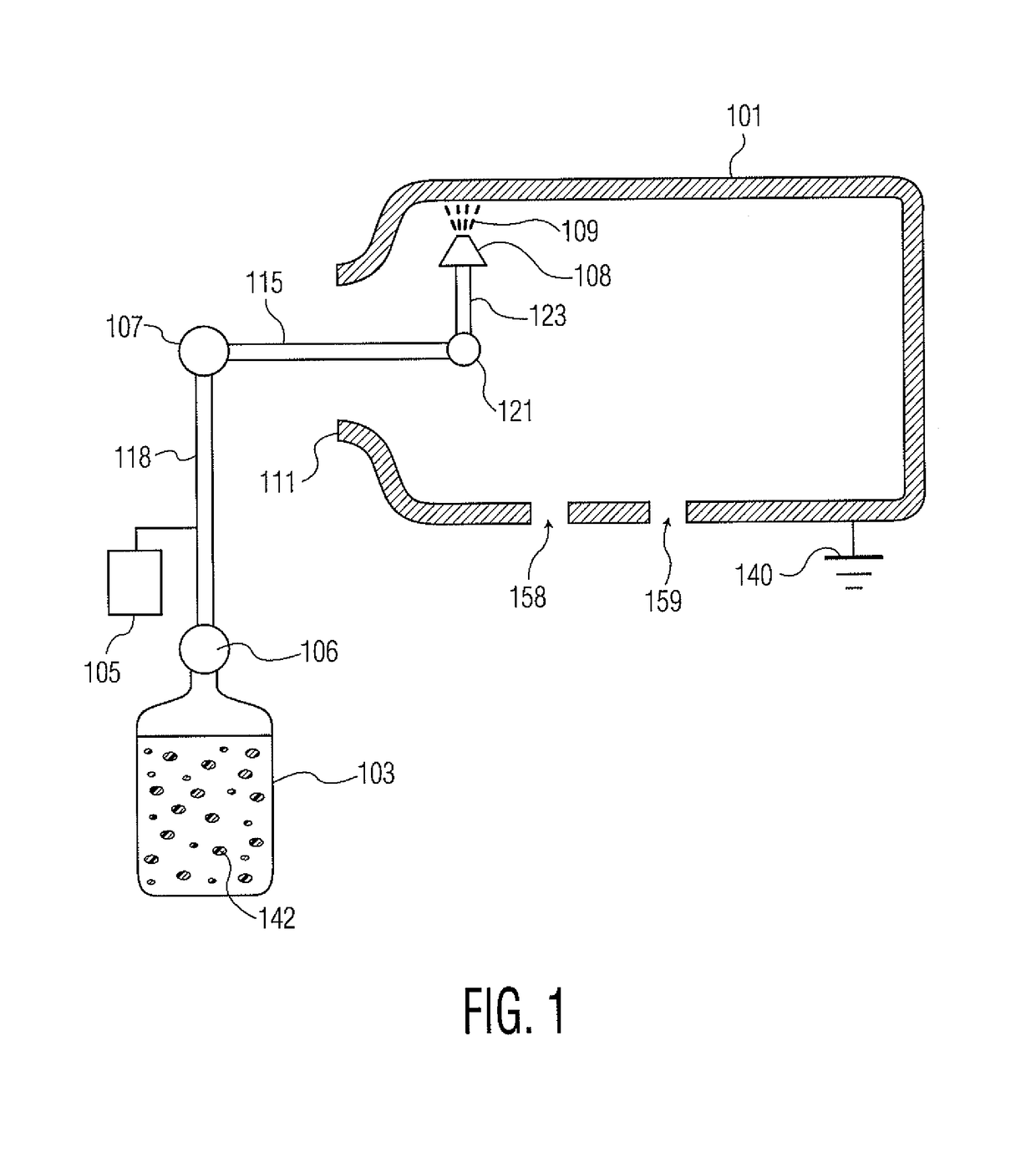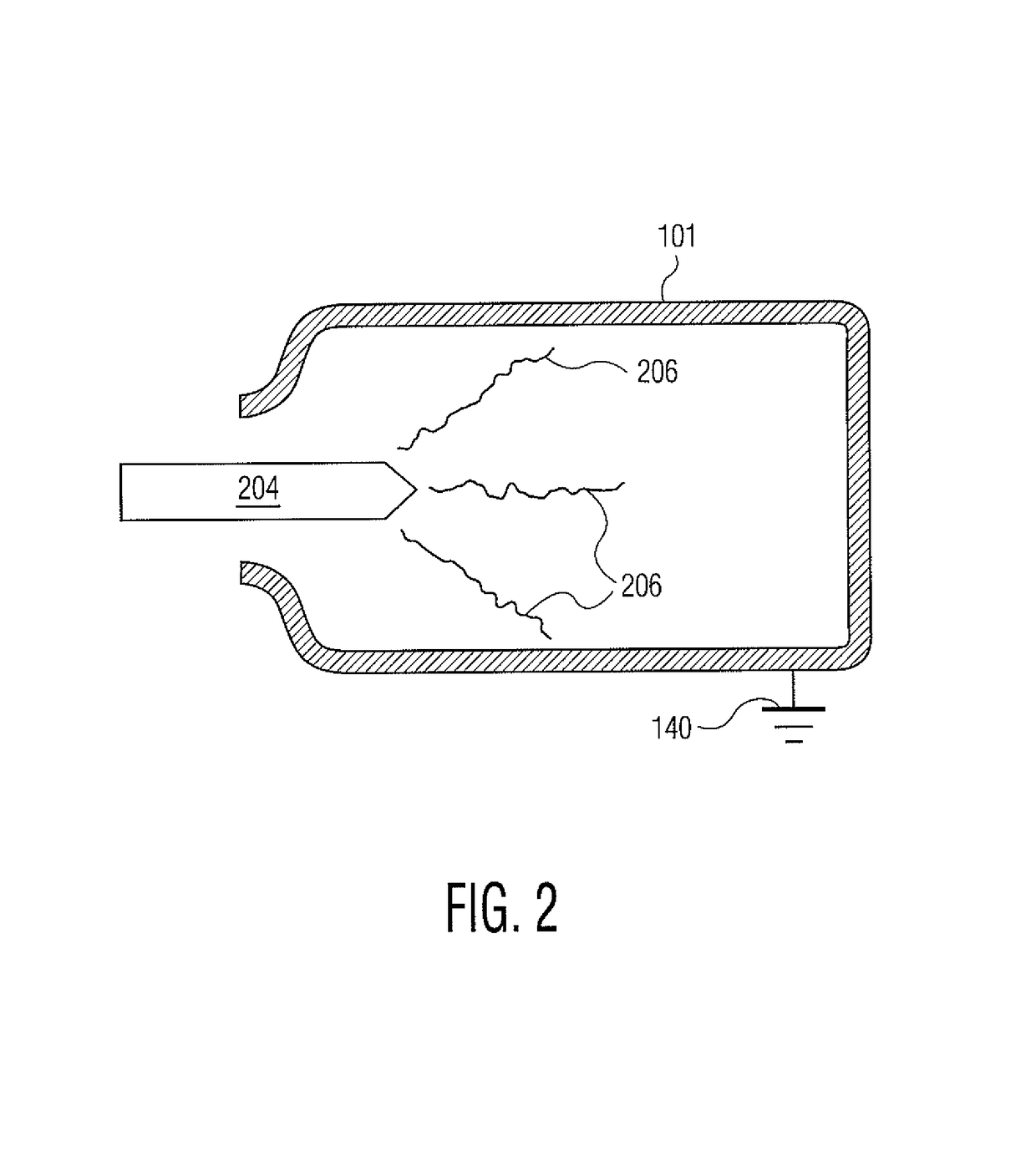Insensitive munitions liner
a technology of insensitive munitions and liner, which is applied in the direction of ammunition storage, coatings, weapons, etc., can solve the problems of increased pressure, damage to or loss of other nearby weapons, and sometimes the pressure cannot reach the desired vents
- Summary
- Abstract
- Description
- Claims
- Application Information
AI Technical Summary
Benefits of technology
Problems solved by technology
Method used
Image
Examples
Embodiment Construction
[0017]FIG. 1 shows application of thermoplastic powder to the inside of a sample warhead casing 101, which has a mouth opening 111. It is desired to ultimately apply a coating of at least 0.1 inch depth of thermoplastic powder granules across every part of the interior surface of sample warhead casing 101. The warhead casing material may be of a metal such as steel, or of another metal, or even of another type material. The casing 101 is electrically grounded, as shown at 140, in at least the first step of the operation, but preferably throughout the entire process. A supply of thermoplastic powder granules 142 is preloaded at container 103; the size of a mean thermoplastic powder granule is approximately between 210 and 297 microns, though other sizes might be used.
[0018]The thermoplastic powder may conceivably be applied as droplets in a liquid solution form, as opposed to dry granules. Thermoplastic powder granules may be pumped from container 103 by pumping means 106, along pipe...
PUM
 Login to View More
Login to View More Abstract
Description
Claims
Application Information
 Login to View More
Login to View More - R&D
- Intellectual Property
- Life Sciences
- Materials
- Tech Scout
- Unparalleled Data Quality
- Higher Quality Content
- 60% Fewer Hallucinations
Browse by: Latest US Patents, China's latest patents, Technical Efficacy Thesaurus, Application Domain, Technology Topic, Popular Technical Reports.
© 2025 PatSnap. All rights reserved.Legal|Privacy policy|Modern Slavery Act Transparency Statement|Sitemap|About US| Contact US: help@patsnap.com


